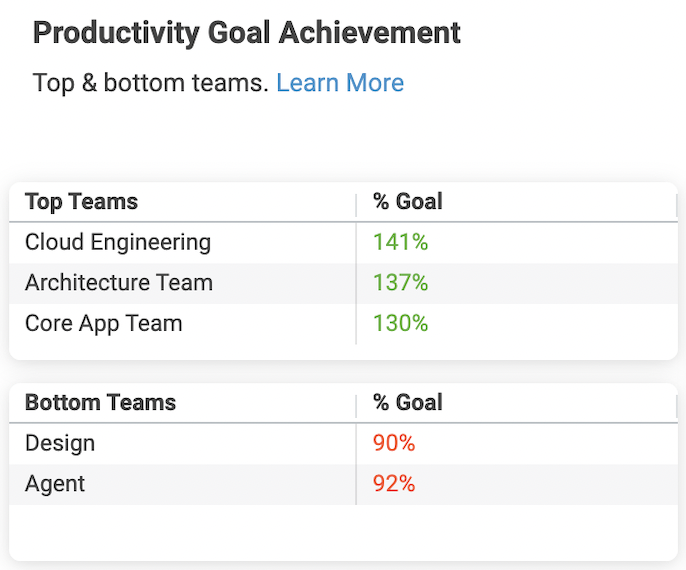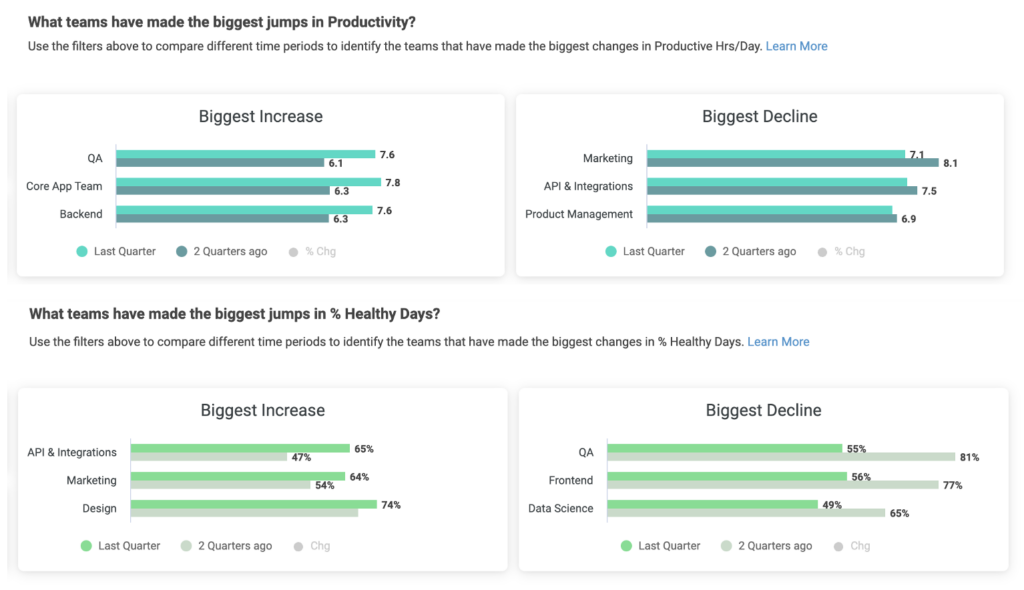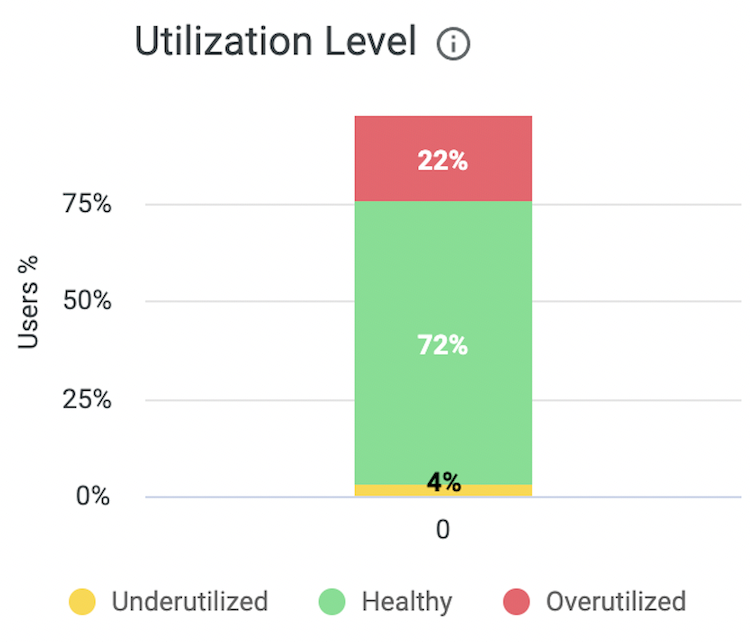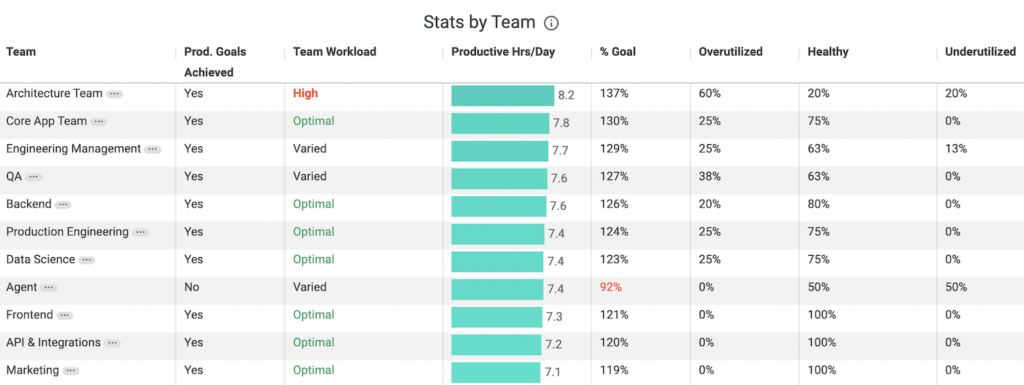Readers are inundated with claims of business productivity improvement throughout the Covid-19 pandemic. Employers and employees alike point to these statements and statistics as a sign—a sign that hybrid and remote working arrangements are highly effective. Many use this evidence to suggest that these arrangements may work even better than the in-office, working schedules of our past. At least, that’s what the articles often go on to claim.
I do believe that hybrid and remote working arrangements can work; and yes, even better than the more archaic schedules of our past. However, I also believe that pointing to the maintained levels of “productivity” over the course of the pandemic as evidence of these arrangements working is not doing us any favors in our efforts to advance the workplace into one that is more healthy, inclusive, and supportive.
While claims of productivity gains dominate headlines, they often fail to recognize the staggering increase in employee burnout, drastic drops in employee engagement, the emergence of workplace biases, and disproportionate impacts across employee groups. To proceed with hybrid and remote work in this new era of work, we must 1) redefine our definition of productivity and 2) adjust the metrics we use to assess it.
The New Productivity is Sustainable Productivity
The new, broader definition of productivity introduces the well-being of the resources leveraged to produce the outcome. It takes into account how the outcomes are achieved. Historically, we came to measure productivity by merely assessing the widgets rolled off the assembly line. In doing so, we neglected to understand the strain put on the resources that produced them. When we disregard this impact, we fail to achieve healthy, sustainable productivity that can be reached over a period of time without fully depleting or damaging the resources used to produce them.
When we measure productivity for its sustainability, we elevate our approach to managing individuals and entire organizations. We can no longer ignore concepts like burnout, disconnectedness, and mental health. We can’t celebrate output while neglecting to disclose turnover and wellness troubles across employees. Instead, as companies adopt this new definition, they’ll also begin adopting solutions in the workplace to address what plagues their workforce today.
Head on, we’ll expedite the way we grapple with concepts such as disparities in at-home work setups, Zoom fatigue, virtual workplace exclusion, unfounded assumptions, and biases. In embracing and supporting a shift to redefining productivity in which we evaluate the way it was achieved, we will advance the future of work while unlocking the enormous potential of hybrid and remote work.
Measure what Matters
There are many steps an organization must take to shift its focus to sustainable productivity (more content on this to follow). Among them, adjusting our measurement is undoubtedly the most important. When we shift the measurement, we are shifting (in this case, broadening) what we deem important. It no longer matters that employees were productive but that they were productive in a way that reflects a balanced and healthy workload. This is precisely why I am so excited to share ActivTrak’s latest Executive Summary Dashboard that marks a transformation in how we are pioneering the interpretation of productivity. Here are a few ways how:
- Productivity Goal Achievement: The new Executive Summary Dashboard refocuses attention away from absolute productivity and toward goal achievement. In doing so, the emphasis is on sustainable achievement of daily goals versus the top teams merely working the most amount of hours– a metric that, when used improperly, can lead to burnout while stunting innovation and efficiency.

- Behavioral Shifts: The new report highlights major climbs and dips in team productivity behaviors. In doing so, it becomes substantially easier for leaders to see where they can outwardly appreciate and celebrate team improvement across the organization. This also reveals where support and intervention may be critical. In surfacing substantial changes in team behavior, leaders gain greater visibility into where they can provide timely, tailored, and relevant support.

- Workload Balance and Utilization Levels: With heightened awareness around employee utilization levels, leaders can improve their understanding of employee burnout risk while evaluating productive activity at the same time. The report places these two metrics alongside one another to better ensure the conversation focuses on sustainable productivity practices.

- Team Workload: While individuals across the organization may be battling burnout, the greatest risk exists when entire teams face these challenges at the same time. In these cases, leaders must pay immediate attention to where they can help alleviate the burden on a team at risk. With the introduction of “workload balance” metrics, leadership can view the composition of the employees on a particular team to better understand the extent in which the entire team is evenly sharing the productivity workload (versus a select few overutilized employees contributing to the healthy average of the team).

In introducing these metrics, ActivTrak has taken a step forward in redefining productivity and providing its customers with the metrics to support it. Moreover, the report aggregates this data to a level in which individuals are anonymized—maintaining an emphasis on support and opportunity, rather than managerial oversight.
In Summary
To thrive in the next era of highly mobile and flexible work, businesses must step forward and boldly redefine the way their organization assesses productivity and performance. Celebrating the success of outputs while disregarding the cost and strain placed on inputs will put companies at great risk. Adopting metrics that evaluate productivity inputs alongside the outputs will be the first step in driving new behaviors. ActivTrak’s Executive Summary Dashboard encourages leaders to evaluate the entire picture from the start—enabling them to understand the health of their workforce in comparison to key productivity goals. In doing so, leaders, now more than ever, have immediate and ongoing access to provide the essential support their employees need to produce results in effective and sustainable ways.
About ActivTrak and The Productivity Lab
ActivTrak helps companies unlock productivity potential. Our award-winning workforce productivity and analytics software provides expert insights that empower people, optimize processes, and maximize technology. With data sourced from more than 9,500 customers and 250,000 users, ActivTrak’s Productivity Lab is a global center for ground-breaking workforce productivity research and expertise that helps companies embrace and embody the future of work.

